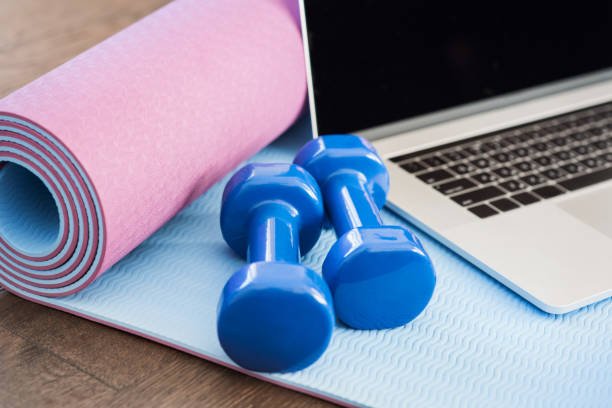How to Build Your Own Workout Routine: A Comprehensive Guide for Women
Understanding Your Fitness Goals
Establishing clear fitness goals is a critical first step in developing an effective workout routine. Women may pursue a wide variety of fitness aspirations, including weight loss, muscle gain, improved endurance, or overall health enhancement. Recognizing these goals not only provides direction but also champions personal motivation throughout the fitness journey.
The first category of fitness goals is weight loss, which typically aims for a reduction in body fat and can contribute significantly to enhanced health and self-esteem. Conversely, muscle gain focuses on increasing lean muscle mass, resulting in a toned physique and heightened metabolism. Some women may prioritize increased endurance, which plays a vital role in improving stamina for both everyday activities and physical challenges. Additionally, overall health improvement encompasses a holistic approach, emphasizing well-being, energy levels, and reducing the risk of chronic diseases.
To create a workout routine that aligns with these objectives, it is essential to set SMART goals. These objectives are characterized by being Specific, Measurable, Achievable, Relevant, and Time-bound. For instance, instead of declaring a vague intent to “get fit,” an effective approach would be to specify, “I aim to lose 10 pounds in three months by exercising at least four times a week and following a balanced diet.” This clarity will not only provide a measurable benchmark for progress but also makes the goals feel attainable.
Moreover, aligning your goals with your personal lifestyle is vital. Consider your current fitness level, time constraints, and available resources when defining and pursuing your fitness aspirations. By comprehensively understanding your goals and employing the SMART framework, you equip yourself with the tools necessary to create an effective, personalized workout routine that acknowledges your unique desires and capacities. This foundational understanding will foster sustained commitment and success in your fitness endeavors.
Assessing Your Current Fitness Level
Before embarking on the journey to create a personalized workout routine, it is essential to accurately assess your current fitness level. This evaluation serves as the foundation for tailoring a program that aligns with your individual capabilities, goals, and preferences. A proper assessment can take various forms, including fitness tests, and self-evaluation of strength, flexibility, and cardiovascular endurance.
One effective method for determining your fitness level is to conduct specific fitness tests. These tests can include measuring your maximum number of push-ups or sit-ups in a minute, assessing your mile run time, or evaluating your flexibility through a sit-and-reach test. Tracking your performance in these areas will provide valuable insight into your current physical capabilities and help identify areas in need of improvement.
Additionally, it is crucial to evaluate your strength and flexibility. Understanding your muscle strength can inform you about the amount of resistance training needed, while assessing your flexibility can help prevent injuries by highlighting areas that may require more stretching. Cardiovascular endurance is another important aspect to consider, as it significantly impacts your overall fitness. Engaging in activities like jogging, cycling, or swimming can help gauge your endurance level and aid in forming cardio-related goals within your routine.
Moreover, recognizing your body limitations and preferences is vital in designing a sustainable workout plan. Each individual has unique strengths and weaknesses, which means a one-size-fits-all approach is rarely effective. Taking note of any past injuries, accessibility to equipment, or specific activities you enjoy can enhance your routine’s consistency and effectiveness. By understanding your fitness level and carefully considering personal factors, you can cultivate a workout routine that not only meets your physical needs but also boosts motivation and enjoyment.
Choosing the Right Types of Exercises
When constructing a personalized workout routine, it is crucial to understand the various categories of exercises and how they can best serve individual fitness goals. The primary categories include strength training, cardiovascular activities, flexibility exercises, and functional movements. Each type plays a vital role in creating a balanced regimen tailored for women.
Strength training involves using resistance to build muscle mass, enhance endurance, and increase metabolic rate. It is essential for women to incorporate strength exercises into their routines as they not only aid in shaping and toning the body but also provide significant health benefits. This can include bodyweight exercises, free weights, or resistance bands. A well-rounded strength training program should target major muscle groups, ensuring balanced development and reducing the risk of injury.
Cardiovascular exercise is equally important. It improves heart health, boosts endurance, and aids in weight management. Women can choose from various forms of cardio, such as running, cycling, swimming, or group classes like aerobics and Zumba. The key is to select activities that are enjoyable and align with one’s fitness level, fostering consistency and engagement.
Flexibility exercises, often overlooked, play a fundamental role in overall fitness. Practices such as yoga or Pilates enhance flexibility, reduce muscle tension, and improve posture. Incorporating flexibility training into your routine can also aid in recovery and decrease the risk of injury.
Lastly, functional movements mimic everyday activities, improving strength and coordination. They focus on enhancing the body’s ability to perform daily tasks efficiently. Exercises such as squats, lunges, and carrying weights can be essential, especially for women aiming to enhance their physical capabilities.
By evaluating individual goals and physical abilities, women can effectively select the right types of exercises to integrate into their workout routine, making it both effective and enjoyable.
Designing Your Weekly Schedule
Creating a balanced weekly workout schedule is crucial for achieving fitness goals, especially for women who often navigate busy lifestyles. A well-structured routine should incorporate a mix of strength training, cardiovascular exercises, and rest days to promote overall health and fitness. Strength training can significantly enhance muscle tone and metabolism, while cardiovascular activities contribute to cardiovascular health and weight management.
To begin designing your weekly schedule, assess your current lifestyle to identify times when you can dedicate yourself to working out. Allocating specific days for strength training and cardio ensures a well-rounded approach. For example, consider strength training two to three times a week, focusing on different muscle groups each session. This variation will help prevent overuse injuries and enhance muscle recovery. Meanwhile, include cardiovascular workouts three to four times a week, varying the intensity and duration to keep your routine engaging and effective. High-Intensity Interval Training (HIIT) sessions can be interspersed with longer, steady-state workouts to optimize cardiovascular health without causing burnout.
The inclusion of rest days is equally vital. These days allow your body to recover, rebuild, and avoid fatigue from overtraining. Depending on your schedule, you could designate one to two rest days per week, allowing your body ample time to recuperate. Additionally, consider integrating active recovery days, where lighter activities such as walking, yoga, or stretching can promote mobility without putting excessive stress on the body.
By carefully structuring your weekly routine and prioritizing recovery, you can fit workouts seamlessly into your life, maintain motivation, and work towards your fitness objectives effectively.
Incorporating Warm-Ups and Cool-Downs
In any well-structured workout routine, incorporating warm-ups and cool-downs is vital for optimizing performance and enhancing safety. Warm-ups serve to gradually increase body temperature and blood flow to muscles, preparing the body for the physical demands of exercise. A typical warm-up should consist of dynamic stretches and movements that mimic the upcoming workout intensity. For example, if you plan to engage in a running session, start with brisk walking or light jogging, followed by leg swings and arm circles. These activities not only help to loosen tight muscles but also increase heart rate, which is crucial for preventing injury.
Similarly, a proper cool-down is essential for facilitating the body’s recovery after exercise. This phase helps to lower heart rate gradually and relax muscles that may have become tense during the workout. After completion of your main exercise, spend 5 to 10 minutes performing gentle movements, such as walking or slow cycling. This allows for the gradual return of circulation to its resting state. Stretching is also a fundamental component of the cool-down phase. Focus on static stretches targeting major muscle groups utilized during the workout. Holding each stretch for 15 to 30 seconds can increase flexibility and reduce muscle soreness, greatly contributing to your overall athletic performance.
Moreover, regular incorporation of warm-up and cool-down routines strengthens neuromuscular connections which can improve coordination and agility. Women, in particular, may benefit from a personalized approach to warm-ups and cool-downs to address specific strength and flexibility needs. Tailoring these components not only enhances individual performance but also serves as a preventive measure against common workout-related injuries. Establishing a consistent routine around these practices can significantly aid in achieving your fitness goals while ensuring a safe exercise experience.
Tracking Progress and Making Adjustments
Monitoring your fitness progress is a critical aspect of building an effective workout routine. By tracking your achievements and challenges, you can gain insights into your performance and make informed adjustments to your exercise plan. One effective method for documenting your progress is through a fitness journal. This can serve as a detailed log of your workouts, including exercises performed, weights lifted, distances run, and even your feelings about each session. Recording this information not only helps to keep you accountable but also allows you to identify trends over time.
In addition to traditional journals, many individuals now turn to fitness apps for tracking purposes. These apps often offer various features such as activity logs, progress graphs, and even nutritional tracking. Utilizing technology can streamline the process and provide a comprehensive overview of your fitness journey. Many apps also have community features that allow you to connect with others, share achievements, and receive motivation, which can enhance your commitment to your routine.
Furthermore, regular self-assessments play a vital role in ongoing success. Conducting evaluations—whether through measuring physical metrics like body composition or monitoring performance improvements in strength or endurance—provides a more substantial picture of your fitness journey. Understanding how to interpret the results of these assessments is crucial; for instance, seeing a plateau in weight loss or performance may indicate the need for a change in your routine.
Knowing when and how to adjust your workout routine is just as important as establishing it in the first place. If progress stagnates, it may be time to intensify your workouts, incorporate new exercises, or alter the frequency of training sessions. By being proactive and flexible in your approach, you ensure your workout routine continues to meet your evolving fitness goals.
Staying Motivated and Overcoming Challenges
Staying motivated while following a workout routine can be particularly challenging for women, especially when faced with time constraints or fluctuations in enthusiasm. It is essential to recognize these common obstacles and engage in strategies that foster resilience and perseverance. Understanding this dynamic is crucial for anyone seeking long-term fitness success.
One effective method to maintain motivation is establishing accountability. Engaging a workout buddy can provide mutual encouragement and make exercise more enjoyable. When partners share their progress and setbacks, it creates a sense of commitment that is hard to forsake. Additionally, joining fitness communities such as local gym classes, running clubs, or online forums focused on women’s fitness can enhance motivation through shared goals and collective support. These communities often celebrate each other’s achievements, which can serve as a powerful motivator to keep progressing.
To combat motivation dips, setting specific, measurable, and achievable mini-milestones is highly beneficial. Rather than focusing solely on long-term goals, celebrate smaller victories, be it completing a challenging workout, mastering a new exercise, or hitting a series of consistent workout days. These mini-milestones not only foster a sense of progress but also build a more positive association with the workout routine, making the overall experience more gratifying.
Additionally, consider varying workouts to maintain interest. Routine changes can reignite enthusiasm and ensure that fitness remains engaging rather than monotonous. Integrating a mix of strength training, cardiovascular activities, and flexibility exercises can add diversity while targeting different muscle groups.
Lastly, recognize that overcoming challenges is part of the journey. Accepting that there will be ups and downs is crucial in retaining momentum. By employing these techniques, staying motivated becomes manageable, transforming challenges into stepping stones toward achieving one’s fitness aspirations.
Nutrition: Complementing Your Workout Routine
Nutrition plays a pivotal role in enhancing the effectiveness of your workout routine. The relationship between diet and exercise is crucial; without appropriate nutritional intake, achieving fitness goals can become a challenging endeavor. To begin, meal planning is essential. Dedicated meal prep can save time and ensure that you have balanced meals readily available, facilitating commitment to your fitness regimen.
Prioritizing certain foods is especially important when considering pre- and post-workout nutrition. Before exercising, it is advisable to consume a carbohydrate-rich snack that provides energy—think bananas or oatmeal—alongside a small amount of protein to promote muscle function. After the workout, a combination of protein and carbohydrates supports muscle recovery. Examples include a smoothie made with protein powder and fruits or a meal with lean meats and whole grains.
Essential nutrients such as carbohydrates, proteins, fats, vitamins, and minerals contribute at various levels to overall health and workout performance. Carbohydrates are not merely viewed as an energy source; they play a vital role in replenishing glycogen stores following intense exercise. Proteins, on the other hand, are fundamental for muscle repair and growth while healthy fats support overall body function and assist in the absorption of certain vitamins.
Additionally, don’t overlook the importance of hydration. Proper fluid intake is critical for optimal performance; dehydration can lead to fatigue, decreased motivation, and impaired physical performance. Women, in particular, should aim to drink enough water throughout the day and consider electrolyte-rich beverages post-exercise to maintain balance and support recovery.
Overall, a well-rounded nutritional strategy tailored to your workout routine can accelerate results and promote overall well-being. By understanding the pivotal role of each nutrient and staying hydrated, you will be better equipped to achieve your fitness goals effectively.
Seeking Professional Help: When and Why
When embarking on a fitness journey, women often face the decision of whether to seek professional help. This decision can significantly influence the effectiveness of a workout routine. Hiring a personal trainer or joining a fitness class can provide valuable guidance, especially for those who may be new to exercise or have specific fitness goals. Understanding when to pursue professional assistance is essential for maximizing results and enhancing the overall workout experience.
One key scenario in which professional help may be beneficial is when one lacks motivation or struggles to create a consistent routine. A personal trainer can provide not only accountability but also personalized strategies that align with individual fitness aspirations, be it weight loss, muscle gain, or improving endurance. They can introduce innovative exercises that keep the routines engaging and enjoyable.
Additionally, those who have pre-existing health conditions or injuries should consider consulting fitness professionals. Trainers certified in special populations can offer tailored strategies and modifications that accommodate any limitations while optimizing safety during workouts. This kind of targeted guidance is crucial for preventing injuries and ensuring effective rehabilitation.
In group settings, joining a fitness class can impart a sense of community that fosters motivation and commitment. Classes led by experienced instructors often introduce participants to various workout techniques, promoting variety and allowing individuals to explore different fitness modalities. Choosing the right class hinges on interests and desired outcomes—whether it’s yoga for flexibility or high-intensity interval training for cardiovascular health.
Ultimately, the decision to seek professional help depends on individual needs and circumstances. Engaging with qualified fitness experts not only elevates the quality of workouts but also equips women with the knowledge and techniques necessary to attain their fitness goals effectively and sustainably.






